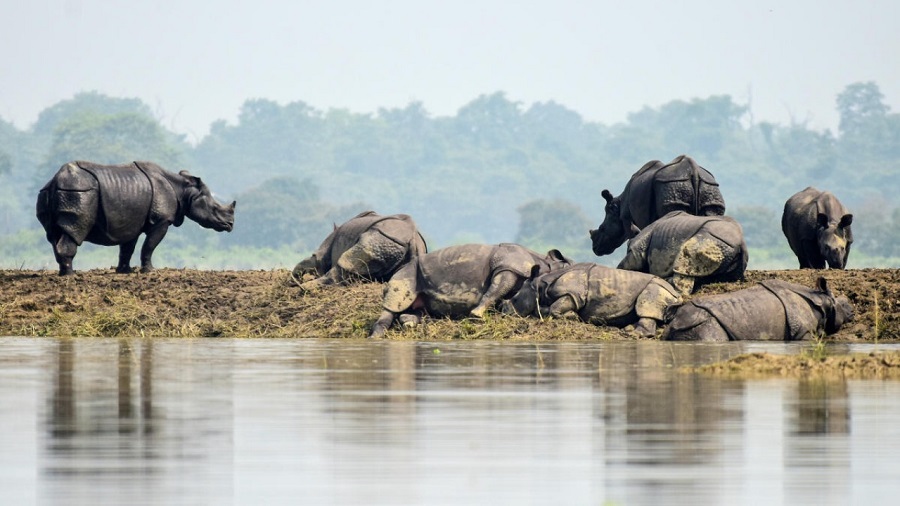Yashaswani Chauhan, Pune
Kaziranga National Park in Assam is facing its worst flooding in years, leading to the deaths of more than 130 wild animals, including six rare one-horned rhinos. The floods, caused by heavy rains, have devastated both the park and the surrounding areas.
The park is a UNESCO World Heritage site and home to the world’s largest population of one-horned rhinos, with over 2,400 individuals. It also houses tigers, elephants, wild water buffalo, and many bird species. Unfortunately, the floods have submerged large parts of the park, leaving many animals stranded and struggling to survive.
The deceased animals include 117 hog deer, two sambar deer, a rhesus macaque, and an otter. Most of them drowned in the floodwaters. The 2017 floods in Kaziranga also caused significant damage, with over 350 animals dying due to the flooding and vehicle collisions during their migration to higher grounds.
Efforts to rescue animals are ongoing. Till now the officials have rescued 97 animals from the floodwaters, out of which, few have been receiving medical care, while others have been treated and released back into the wild. One notable rescue involved an 18-month-old rhino calf that sought shelter at a house in a nearby village. The calf was saved by the Centre for Wildlife Rehabilitation and Conservation.
The floods have impacted wildlife and have caused widespread devastation for people living in Assam. Over two million people have been displaced, and more than 60 lives have been lost. The torrential rain has caused rivers, including the Brahmaputra, to overflow, flooding thousands of villages and damaging roads, crops, and livestock.
Relief efforts are underway, with hundreds of camps set- up to shelter those displaced by the floods. Multiple agencies, including the National Disaster Response Force and the State Disaster Response Force, are involved in rescue and relief operations. They have deployed 171 boats to aid in these efforts.
The situation remains critical with officials warning of more rain in the coming days. Water levels in the Brahmaputra River are expected to rise further, which could worsen the flooding. Flooding and landslides are common during the monsoon season in northeastern India and neighboring countries, but this year’s rains have been particularly severe.
